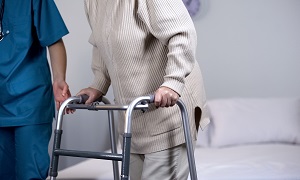What is ACL Reconstruction
Anterior cruciate ligament (ACL) reconstruction is a common and critical procedure in orthopedic surgery aimed at repairing a torn ACL, a key stabilizing ligament in the knee. The ACL, located in the center of the knee, plays a vital role in maintaining knee stability by controlling movements and preventing excessive forward motion of the tibia relative to the femur. Injuries to the ACL often occur during sports or physical activities and can lead to significant functional impairment.The ACL is one of four primary ligaments in the knee, with the others being the posterior cruciate ligament (PCL), and the medial and lateral collateral ligaments (MCL and LCL).
Function of ACL Reconstruction
The ACL extends from the femur (thigh bone) to the tibia (shin bone) and is crucial for:
- Stabilizing the Knee: The ACL prevents the tibia from sliding too far forward relative to the femur.
- Controlling Knee Rotation: It helps manage rotational forces, especially during pivoting movements.
- Maintaining Knee Integrity: It contributes to the overall stability and integrity of the knee joint during dynamic activities.
Causes of ACL Injury
ACL injuries commonly result from:
- Sports Activities: Particularly those involving jumping, sudden stops, or changes in direction (e.g., soccer, basketball, skiing).
- Accidents: High-impact trauma or accidents such as car crashes can also cause ACL tears.
- Overuse: Repetitive strain or overuse of the knee can weaken the ACL, making it more susceptible to injury.
Symptoms of ACL Injury
Patients with an ACL tear may experience:
- Popping Sound: A distinct “pop” heard or felt at the time of injury.
- Swelling: Rapid swelling of the knee within a few hours of the injury.
- Pain: Acute pain around the knee, particularly when moving or bearing weight.
- Instability: Feeling of the knee “giving way” or instability during physical activities.
- Reduced Range of Motion: Difficulty bending or straightening the knee fully.
ACL Reconstruction Surgery:
Preparation for procedure
- Don’t eat or drink for 8 to 12 hours prior to the surgery.
- Limit or stop the use of nicotine, caffeine & alcohol weeks before the surgery.
- Doctors may prescribe multivitamins, and vitamin C prior to surgery to promote healing after surgery.
- The patient undergoes physical the*rapy before the surgery in order to reduce pain & swelling because with a swollen knee it may be difficult to regain the full range of motion after surgery
During the procedure
- General anesthesia is given to the patient so that the patient feels comfortable during the surgery.
- Small cuts or incisions are made around the knee joint to insert an arthroscope (a thin, tube-like camera) and other surgical instruments.
- The torn ACL ligament is removed & replaced with an autograft (tendon that is taken from another part of the knee) or with an allograft (a tendon from a donor).
After the procedure
- The patient is advised to keep the pressure off the knee.
- Before leaving, the patient practices walking with crutches and the doctor may advise wearing a brace to protect the knee.
- Pain relief medication like ibuprofen is prescribed by the doctor.
- Physical the*rapy (which includes cold the*rapy & strengthening exercises) is also advised to strengthen the muscles and ligaments after the surgery.
Complications of ACL Reconstruction
Potential complications of ACL reconstruction include:
- Infection: Risk of infection at the surgical site or within the knee joint.
- Graft Failure: Failure of the graft to integrate properly or re-tear of the graft.
- Stiffness: Post-operative stiffness or loss of range of motion.
- Blood Clots: Deep vein thrombosis (DVT) or pulmonary embolism (PE) are rare but serious risks.
Long Term Outcomes of ACL Reconstruction
The majority of patients who undergo ACL reconstruction report satisfactory outcomes, including:
- Improved Function: Enhanced knee stability and function, allowing a return to daily activities and sports.
- Reduced Pain: Significant reduction in pain and discomfort associated with the initial injury.
- High Satisfaction: Many patients achieve their pre-injury activity levels and report high satisfaction with the procedure.
FAQs
Depends upon your type of job.
ACL surgery is minimally invasive surgery done with the help of arthroscope
A4-6 weeks so that the graft can heal
The leg is elevated with the help of a cushion or pillows for 6-8 weeks to ensure that there is adequate movement of fluids and there is no swelling in the operated leg.
- Pain
- Bleeding
- Infection
- Stiffness of the knee joint.
- Instability of knee joint
- Decreased movement of the knee joint.



